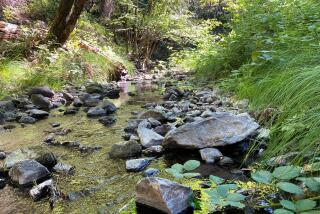Giving salmon a lift
Hauling truckloads of hitchhiking juvenile salmon around dams is one silly way to save a species. And it doesn’t work either.
As four dams were built along the lower Snake River in southeastern Washington from the late 1950s to early 1970s, it took only a few years for the river’s healthy salmon populations to plummet. By the mid-1990s, the populations of four types of salmon had been declared endangered or threatened. The federal expenditure of $8 billion since then for fish ladders, hatcheries, habitat restoration and, yes, trucks and barges to transport the salmon around the dams has not restored the fish.
The salmon must make their way past a total of eight dams, four on the lower Snake River and four older dams on the Columbia River, closer to the ocean. But the fish appeared to thrive despite the Columbia River dams. Since the Snake River dams were built, the loss of salmon has decimated a once-thriving fishery and has been linked to declining numbers of killer whales; chinook salmon make up 80% of the orcas’ diet.
The salmon’s fate has been litigated for years, with a federal judge repeatedly rejecting the government’s vague plans for restoring the fish, most notably after the George W. Bush administration claimed that the dams were a natural part of the environment. Under President Obama, the National Oceanic and Atmospheric Administration has begun a new review, but the judge is getting impatient and on Monday gave the administration one more month to make its intentions known.
Shipping young salmon around the dams is not a long-term solution. The fish are not returning to the river in large numbers, and some experts believe that the interruption in their migration is in good part to blame. The simple answer would be to breach the dams -- except that they provide 5% of the region’s power in the form of clean hydroelectric energy. They also create a navigable waterway for the shipment of grain from Idaho.
Yet the importance of the Snake River salmon cannot be ignored. Climate change is believed to be a factor in last year’s collapse of the California and Oregon salmon fisheries. The salmon farther north, where waters are colder, have not been as affected. Protecting these fish could provide the best hope of restoring salmon all along the West Coast.
The Obama administration should call for settlement talks that include all the parties involved -- power utilities, farmers, fishermen and environmentalists. At least some of the dams must be breached, but only in conjunction with helping the region develop new sources of clean energy and transportation for Idaho’s grain. In the long haul, it makes more sense to truck wheat than fish.
More to Read
Sign up for Essential California
The most important California stories and recommendations in your inbox every morning.
You may occasionally receive promotional content from the Los Angeles Times.










